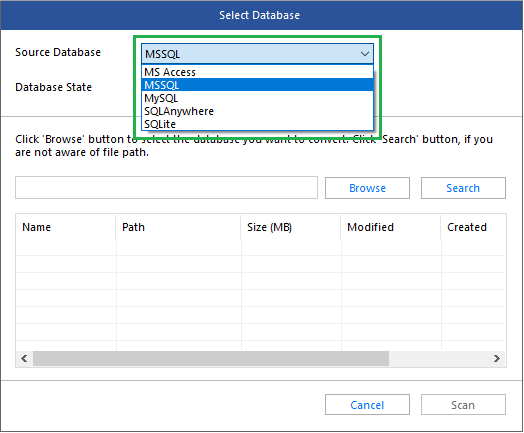Hi Guys,
Have a good week first of all!
In this post, I want to introduce you to a toolkit called Stellar Toolkit for MS SQL. This toolkit contains 5 software that are useful in many critical situations, such as:
To repair corrupted SQL Server database
To extract database from corrupted backup
To convert data from database to Access, SQLite, or SQL Anywhere
To inspect the SQL Log file
To reset the password of MS SQL Server
Enjoy the reading!
Installation of the Toolkit
Like other Stellar products, installation of this toolkit is simple. You just need to download the software from here. The size of the file is small.
Once the .exe file is downloaded, just double-click it to open the setup wizard.
Then, click on the Next Button.
You must accept the license agreement and press the Next button.
Now, if needed, you can change the default location. Then, press the Next button.

You can select a location to create program shortcut or let it create in the Start Menu folder. Then, press Next.

Finally, press the install button.

After some seconds, the installation will be complete.
Review of Stellar 5-1 Toolkit
I must admit that while reviewing a product, especially when it comes to giving judgment, I always find myself in a bit of trouble because a product is always the result of work of many people (programmers like me). Also, the judgment can only be a bit subjective.
In this case, I must say that the task was easier than usual because the software provides only useful and well distinct functions. In addition, the operation is intuitive.
I like clear interfaces just like the one in this software. The software’s main interface provides 5 buttons for 5 functions. Therefore, making mistake is not possible.
Now, let's see these 5 features one-by-one.
1. Repair MS SQL Database
This is undoubtedly the main and important function of this software. This same function (with the same interface) is also present in a separate stand-alone product that I have already reviewed on my blog here.
Clicking the button on the left of the main window allows you to execute the “repair a corrupted SQL Server database” function. To do this, the software does not rely on SQL Server (which may not necessarily be present) but parses the database (mdf) file.
Recovery takes place in two stages. First, all the data is read and stored. In the second stage, the data is saved. You can save the data in a new MS SQL Server database or even in other formats.
A little more detail.
As soon as the program starts, it asks you to indicate the path where the corrupt mdf file is located.
Obviously, the file must not be in use.
When you press the Repair button, the mdf file is parsed and every MS SQL Server object is read.
On the left panel, you will have a tree structure where you will see the list of the objects retrieved (tables, views, etc.).
Pressing the Save button saves the data. You can save the data in a new SQL Server database or in other formats.
2. Extract from MS SQL Backup
This tool allows you to read data directly from a MS SQL Server database backup. The good thing is that the software reads the data from a corrupt backup file. This is great!
You will have already understood how this toolkit works. Just click the Browse button and choose the backup file to process.
Two scan modes are present - Standard and Advanced.
Choose the scan mode according to your requirements (I chose the Advanced Scan option) and press the OK button.
The process will begin when you hit the Next button. A message will appear when the process is complete.
Click the Save button to save the data.
I must report only small cons in case of compresses databases. In fact, compressed files are not supported. If you try to process a compressed file, you get this message.
3. Converter for Database
The converter for database tool allows you to easily copy data from different formats. The interface is clear as usual.
You can choose to read data from an MS SQL Server database, either from mdf file or read it directly from the database (live mode).
If you choose live mode, you just have to specify the server name, the authentication mode, and then choose an existing database. 
When you press the Scan button, the program will start reading the system structure.
Select which table to convert and press the Convert button to start the conversion.
4. Log Analyzer for MS SQL
This software is used to show the content of log file of an MS SQL database. Just click the Select LDF button and choose an ldf file to inspect. The file must not be in use.
Simply click the Analyze button to start the process.
Finally, press the Save button.
5. Recover MS SQL Password
This is the latest feature of this toolkit. It helps you to change a user's password.
By clicking the Browse button, you can choose a master.mdf file. Then, a list of users will be displayed.
Simply choose a user and click the Change Password button.
Conclusion
From my point of view, if you work with MS SQL Server, this is definitely an indispensable tool at hand.
You can recover or repair MS SQL Server database. You can also read data directly from MS SQL backup or export data in various formats. And finally, you can restore passwords. Furthermore, it is clear and easy-to-use.
For these reasons, this software deserves my personal 5-star badge.
Previous post: SQL Server, the Row Count Spool (explained in a simple way)


























